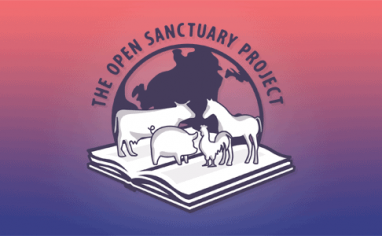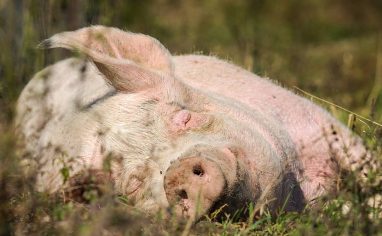
Subscribe To The Open Sanctuary Podcast
If you’d like to get the latest episodes of The Open Sanctuary Podcast, you can subscribe for free on all Podcast platforms, including Apple Podcasts and Spotify!
Episode Notes
In this episode of The Open Sanctuary Podcast, Community Education Specialist Andie Springirth is joined by special guest and Open Sanctuary Project contributor Dr. Emily Tronetti to discuss farmed animalA species or specific breed of animal that is raised by humans for the use of their bodies or what comes from their bodies. agency and how to start centering it at your sanctuary to improve the overall health and well-being of the residents. In addition to exploring what agency is and why it’s so important, this episode highlights some practical agency-centered practices that sanctuaries can implement right now.
—
This Episode’s Referenced Open Sanctuary Project Resources:
- An Introduction To Fostering Agency In Farmed Animals At Your Animal Sanctuary
- A Guide to Fostering Farmed Animal Agency in Sanctuary Education: Asking Other Animals for Consent Handout
- A Guide to Fostering Farmed Animal Agency in Sanctuary Education
- Fly Mitigation Strategies for Sanctuary Cow Residents
- Predator-Proofing for Bird Residents at Your Animal Sanctuary
- Breaking the Mold: How Animal-Centered Design Can Transform Sanctuaries
- Enrichment Resources
- Fostering Critical Thinking at Your Animal Sanctuary
Episode Transcript (Auto-GeneratedThe following content was transcribed through an automated process and may contain transcription errors or misspellings.)
Andie Springirth: Well, hey there sanctuary friends, and welcome back to another episode of the Open Sanctuary Podcast. I’m Andie, the Open Sanctuary Project’s community education specialist, and today I am joined by a special guest, my dear friend and colleague, Dr. Emily Tronetti of Coexistence Education and Consulting. Emily specializes in adult human education and applied animal behavior, and she is very passionate about helping advocates and organizations cultivate compassionate coexistence through teaching about and supporting the agency and well-being of other animals. So, Emily, thank you so much for being on the podcast today. It is such a pleasure to have you.
Dr. Emily Tronetti: Thank you, Andie. It is a pleasure to be here.
Andie Springirth: So, in this episode, Emily and I are going to talk about an important topic that is very near and dear to our hearts at the OSP, which is farmed animal agency. And if you follow the Open Sanctuary Project on social media, or if you’ve checked our website recently, you may have noticed a handful of new resources that Emily and I co-created on farmed animal agency and how to foster it in a sanctuary setting. So, we hope you get a chance to check those out soon, but we know many of our audience members have very limited time on their hands and find our information via this particular platform to be especially helpful. So, if you are a sanctuary staff member or volunteer who’s looking to learn a bit about farmed animal agency and how to start centering it in your space in order to improve the overall well-being of your residents, then this episode is for you. So, Emily, I’d really like to start this conversation today by defining for our friends what we mean by farmed animal agency. More specifically, what is agency and what does it look like in farmed animal species?
Dr. Emily Tronetti: I just want to say I’m really, really excited to be here and I’m so excited to be talking about agency. And so, agency is the capacity of a living being to engage with their environments and to make choices for themselves based on their own preferences, needs and desires. For example, I’m expressing my agency by engaging with you in this conversation, Andie, by choosing to be on this podcast. And farmed animalsA species or specific breed of animal that is raised by humans for the use of their bodies or what comes from their bodies. also express their agency. So, for example, my friend Girl the sheep expresses her agency when she’s grazing or when she’s sleeping, playing with her flock friends. And so, we all have agency. And agency is important to all beings. In fact, that’s one of our key characteristics of agency that we discuss in our resource.
Andie Springirth: Yes, thank you. Agency is incredibly important to all beings and it’s a vital component to the overall physical and emotional well-being of other animals, which is something we stress a lot in our resources on this topic. So, Emily, can you tell us a bit more about why animal agency, or excuse me, agency expression, is so important for their well-being?
Dr. Emily Tronetti: I want to first maybe start with defining well-being, at least how I define well-being. So, just like agency, well-being is something that all animals, including humans, strive for. We all want to feel physically and emotionally healthy and fulfilled and safe. But this is at risk when our agency is suppressed, denied, or ignored. This is something that I think we can all relate to, right? When we can’t make choices for ourselves, when we don’t have control over what’s happening in our environments, or if we don’t have control over what’s happening to us, that can feel really unsafe. And then just to be clear, when I’m saying us and we here, I’m including other animals like farmed animals. And unfortunately, most farmed animals know all too well what it’s like to lack choice and control. And various studies on various species have also demonstrated that this can increase negative emotional states like fear, anxiety, and depression. And of course, this impacts their well-being. And so, Andie, I know that you have cared for many different species and individuals in various settings, and in something we talk about in our resources, it’s how even in the settings where we are striving to provide the best care possible to farmed animals, such as sanctuaries, captivity necessitates varying degrees of agency suppression. And so, I’m curious to know if you’ve ever observed these negative effects of agency suppression in any of the individuals that you care for.
Andie Springirth: That’s a really good question, Emily. I have, but I’m really glad you preface that by validating how hard it is sometimes to nurture resident agency in a sanctuary setting since fully supporting it is, of course, impossible. Before I share an example, I just want to elaborate a bit more on some of those inherent challenges in supporting resident agency. As sanctuary staff, we are all juggling a lot of things on a regular basis, right? From the varying medical, dietary, psychical, social, and spatial needs of multiple individuals to working within the confines of limited resources like time, money, staff, physical and emotional capacity, etcetera, etcetera. Balancing our efforts to provide as much freedom as possible with the necessity to retain some degree of control over the lives of the residents, it’s not easy. So, to go back to your question, let me give our listeners an example of almost all of these points combined into one story. Several years ago, when I was a very green caregiverSomeone who provides daily care, specifically for animal residents at an animal sanctuary, shelter, or rescue. at a large animal sanctuary, I was essentially working on a 1:100 caregiver to resident ratio. And I’m sure this is going to feel familiar to a lot of folks out there listening. But one morning, I was tending to the cowWhile "cow" can be defined to refer exclusively to female cattle, at The Open Sanctuary Project we refer to domesticated cattle of all ages and sexes as "cows." residents. It was the middle of summer, so the flies were atrocious. Anybody who’s lived with cowsWhile "cows" can be defined to refer exclusively to female cattle, at The Open Sanctuary Project we refer to domesticated cattle of all ages and sexes as "cows." knows how much they poop, so flies tend to come with the territory. But as a team, we decided that it was necessary to apply a fly spray to the residents’ coats where we could. And some of the residents were okay with the application of the spray on their skin, and others were not. So, we’d put the spray on a washcloth first and then try to rub it into their coats. Well, this particular day, I was in too much of a hurry trying to get all my morning tasks done, and I was really worried about the flies. So, something many folks will also know is that in addition to being really annoying to cows, flies can also spread disease and cause a lot of other health concerns. Some flies even lay eggs in wounds, which can lead to fly strike. So my point in saying that is just I was hurried and very worried. So when I went to apply the spray to one of the wary cow residents, she backed away very quickly. I apologized. I tried again too swiftly, and she responded the same. In my haste, I glanced at the amount of flies buzzing around her body, and I made the very poor decision to keep trying to get the cloth on different parts of her back even though she was clearly saying no to me every time and her fear was increasing. I wasn’t thinking about her agency, and more importantly, I wasn’t thinking about her history. A handful of years before coming to Sanctuary, this particular resident rescued herself when she escaped a slaughterhouse. And had I slowed down to really consider her agency as well as her background and general history of mistrust in humans, I would have gone about this, of course, in an entirely different way. And what I realized after doing this was that I was reinforcing her trust in humans, which was of course detrimental to her, but it was also detrimental to all of the caregiving staff, including myself, who had been working really hard to build trust with her over a very long period of time. I was not giving her a say in what was happening to her, and I was making her scared. And I realize as I’m saying this that this story and mistake does not shine a very positive light on me. But my hope is that in addition to providing a clear example of some of the negative consequences of suppressing resident agency, what it can look like, I’m also hoping it will give folks who’ve gone through experiences like this and made mistakes, which we all have, whether we’re green or not, some courage and permission to slow down. So, after this happened, of course, I learned a lot. I changed my behavior and I approached how I interacted with this resident and the other residents in a much more agency-centered way. I implemented other fly mitigation strategies that did not involve a spray or washcloth, at least, not until I was ready to reintroduce the cloth to her in a much slower, more gentle, and positive reinforcement way. And this actually brings me to a really important point. And that’s in spite of the challenges that we face in fully supporting resident agency, which includes things like time and mental and emotional capacity and also just the nature of being in captivity and the effects of domestication. As animal sanctuaries, in spite of this, we must continue to work through them by exploring and practicing new ways to center and enhance the agency of residents as much as possible. And I’m curious, Emily, if you could also share some of the positive effects of centering resident agency that you’ve seen in your work.
Dr. Emily Tronetti: Firstly, I just want to say thank you, Andie, for sharing that story. You know, I know that it can be hard to be a little bit vulnerable and share things that we have done that maybe we wish we would have done differently. You are so right that we have all made mistakes and we will all continue to make mistakes in this work. This work is a never-ending process of learning and unlearning. And we have to be kind to ourselves and each other as we navigate. I will agree with you that even though adapting our practices can be challenging, I’ve seen firsthand how worth it’s. And especially when we, like you said, Andie, when we slow down and step back and allow other animals to express their agency as much as possible. When we give them a space to be who they are, it can really have such a profoundly positive impact. So, one example that comes to mind for me is another friend of mine named Skittles, Skittles the goat. So, Skittles was pretty nervous around humans he didn’t know. He definitely preferred to create space from people he didn’t know. And, of course, when I met Skittles, I wanted to interact with him. I wanted to make friends with him, but I quickly realized that I needed to give him this space that he wanted and needed. I needed to allow him to engage with me at his own pace. And with that, with time and with that space, he did warm up to me, and he began to trust me perhaps actually a little bit more quickly than we expected. And I think that was as a result of me just saying, “Hey, you take all the time you need. I’m not going to pressure you. I’m not going to force this interaction.” And within a few times of me being there with him, he was seeking neck massages, and it was pretty, it was pretty great. So when we support the agency of farmed animals, we can see a decrease in fear and anxiety. We can see them become more confident and resilient. And we also through our personal experiences and through research, we see that having more freedom to express agency is to live a more enriching life, which we know not only has positive effects on our mental health, but our physical health too. Yes.
Andie Springirth: And in addition to being vital to the health, well-being, and safety of all animals, which we take very seriously at animal sanctuaries, agency-centered care and education outreachAn activity or campaign to share information with the public or a specific group. Typically used in reference to an organization’s efforts to share their mission. are also crucial to the overall efforts of the animal liberationA social movement dedicated to the freeing of nonhuman animals from exploitation and harm caused by humans. movement at large. And this is not only because of the qualitative difference it makes in the lives of the formerly farmed animals we’re caring for, but also because of the symbolic value it has in demonstrating that different and less harmful ways of being in relationship with them are possible. Which brings me to my next question for Emily. There are a lot of thoughtful agency-centered practices that sanctuaries can implement in their spaces and we get pretty nitty-gritty in terms of what you can do as this pertains to sanctuary education in our guide to fostering farmed animal agency and sanctuary education. But because today’s episode is an introduction to this topic, I’d really like to talk about some of the more general agency-centered practices that our listeners can consider implementing right now. So, Emily, as part of your work on this series for the Open Sanctuary Project, you created some really beautiful supplemental materials to help folks implement some of these practices. One of them was related to nurturing consent-based interactions with residents. So I’m wondering if you could tell us about consent and how it relates to farmed animal agency.
Dr. Emily Tronetti: Of course, so consent is so important to this discussion on agency and well-being. As humans, we have a lot of different associations with the word consent, but in general, consent refers to giving permission, approval, or agreement. And consent is directly linked to agency. So for example, I care about supporting your agency, Andie. It’s critically important that I obtain your consent to engage with you, right? And the same is true when I interact with the other individuals in my life, such as my spouse, my dogs, the farmed animals that I interact with. Consent matters just as much to other species as it does to humans. And I think that sometimes we forget that or we might not acknowledge that because we assume consent requires a written or verbal yes or no. But if you really think about it, humans are communicating consent nonverbally all the time, right? For example, Andie, if I go to hug you and you take a step back, that’s you telling me with your body that you don’t consent to me hugging you. And so this is how non-human animals communicate consent or denial of consent. They’re doing so through their behaviors and their body language. And so this is going to of course look differently depending on the species and the individual. And so it’s important to learn about the behaviors of each individual resident and to pay attention to what they’re communicating with us. And of course this means noticing when they say yes, I would love to interact with you, and also noticing when they say no, no, thank you, with their bodies. And then going the next step and then respecting their lack of consent as much as we possibly can.
Andie Springirth: Thank you. Yeah. And I’m wondering, could you walk us through what a consent-based interaction could look like with a sanctuary resident?
Dr. Emily Tronetti: Yeah. So, of course, keeping in mind that this can vary greatly depending on the individual, the environment, the context. In general, it’s important to give the resident a chance to approach us rather than us approaching them. And once they do approach us, we should let them ask us for the type of engagement that they’re looking for. So, for example, if it’s touch, some animals do this by pulling or nudging our hand or leaning into us. And then, of course, we would respond appropriately by touching or playing with the resident. And once we do, we should also make sure we’re stopping frequently to make sure the resident is still consenting to the interaction. And the reason for this is because many animals have learned that they really just have to tolerate our touch and that they don’t have a say. So, it’s important to give them an out, to give them a chance to say, “You know what? Actually, I think I’m kind of done with this.” So, when you pause, we should look for signs of consent or denial of consent. So, does the animal ask for more touch by playing, by moving closer to us, or by placing themselves under our hand? And if so, of course, the interaction can continue. But if not, if the resident instead tries to move away, or maybe it’s really subtle, maybe their ears go back and they just turn their head away, are they displaying other stress signals? In that case, we should interpret that as maybe a denial of consent. They don’t want that interaction to continue in that way. So, we should give them some space. We should make sure they have the ability to create distance from us if they’d like. For example, if this interaction is occurring in a barn, making sure that they don’t feel cornered, that they can have space to move away from us, and then, of course, the process starts over with us just waiting for them to engage with us in the way that they choose.
Andie Springirth: Thank you so much for sharing that, Emily. I think that’s going to be really helpful. It’s a very tangible step-by-step process. And folks, if you’d like to check out the consent handout that Emily created to illustrate this process, please take a look at it on our website. It is freely downloadable like all of our materials, so you can share with your friends, your colleagues, staff members, and even sanctuary visitors. We’ll include it as a link in the show notes as well.
Dr. Emily Tronetti: Yeah, thanks for mentioning that, Andie. I appreciate that. So, what’s another agency-centered practice that you would like our listeners to consider implementing into their sanctuary work?
Andie Springirth: I would like to emphasize the importance of including primary caregivers and residents in decision-making processes, and really any decision-making processes that may impact the residents. I think this is a vital agency-centered sanctuary practice. And when I say residents, I do mean all residents regardless of the species. So just a brief but very gentle aside here, friends, to always check your own potential species biases even in a sanctuary setting. Everyone, cow, chicken, pig or rabbitUnless explicitly mentioned, we are referring to domesticated rabbit breeds, not wild rabbits, who may have unique needs not covered by this resource., etcetera, etcetera, deserves to receive the same thoughtful consideration. But in addition to the residents themselves, it probably is not going to be a surprise to our listeners that staff who work closely and regularly with the residents on a daily basis also have a very unique insight into the lived realities, experiences, and perspectives of certain species and individuals, as well as the potential effects a particular practice, activity, program, or even event might have on them, right? So these staff members can help us make thoughtful decisions about whether or not it’s appropriate at any given point to override resident agency. And this is a really tough task, especially given the varying complexities and consequences that we talked about earlier of domestication and animal exploitationExploitation is characterized by the abuse of a position of physical, psychological, emotional, social, or economic vulnerability to obtain agreement from someone (e.g., humans and nonhuman animals) or something (e.g, land and water) that is unable to reasonably refuse an offer or demand. It is also characterized by excessive self gain at the expense of something or someone else’s labor, well-being, and/or existence.. And even though these challenges don’t render the residents incompetent or incapable of making decisions on their own, remember it’s vitally important for us to allow them to do this whenever it’s possible and appropriate. But in some circumstances, unfortunately, we have to override their agency in a sanctuary setting. So talk to your staff, work closely with the caregivers, and please work through as a team how you all want to go through that process responsibly.
Dr. Emily Tronetti: Yeah, I love that you have brought up how important it is to work together as a team to communicate. I think that communication and collaboration are essential to agency-centered practices. And I also love how you mentioned that that team also includes the non-human animals that we’re providing care for. And so also important to supporting the well-being of our residents is ensuring that we’re setting up agency-centered living spaces for them, which is something we talk more about in our introductory resource on agency. So, Andie, could you share a little bit more about what we mean by agency-centered living spaces? Like what can these look like?
Andie Springirth: Yes, absolutely. Well, everyone benefits from being able to make choices about what their environments and living spaces look like. And of course, as we’ve been saying this whole episode, farmed animals are no exception. So there’s actually an entire framework called animal-centered design that can help you create agency-centered living spaces with your residents. We have an entire resource on our website dedicated to this topic, but essentially the driving principle behind it is to create or strive to create living spaces that go beyond just providing protection from the elements and security from predators, to providing a habitat or living spaceThe indoor or outdoor area where an animal resident lives, eats, and rests. that the residents might choose for themselves. So, animal-centered design does not look a particular way. It actually highlights the fact that each living space should look different depending on factors like the species, the individual, the setting, the season, etcetera. So, let’s say we’re talking about Skittles the goat again. If your sanctuary is caring for Skittles the goat, your team from an agency-centered design perspective would ask themselves, “Hmm, what kind of living space might Skittles the goat design for himself here if he could?” Your sanctuary could also consider how it can set up living spaces that the residents can manipulate and restructure on their own in ways, of course, that are consistent with their safety. And one way to do this is by providing dynamic enrichment opportunities. We’ve got a ton of resources on enrichment as well. So please check the links in show notes for some inspiration on that if you’re looking. And another important aspect of setting up an agency-centered living space is enabling residents to move the way they want to as much as possible, as long again, and of course, you’re going to hear me be a broken record here, as they are consistent with their safety and contextual limitations, but this includes aspects of moving in a way that allows residents to get outside, feel a sense of overall safety, and have control over who and what they interact with, when they interact with them, and how that interaction occurs. So, in other words, agency-centered living spaces should include self-structuring social environments to the extent that they are safely possible. This also means providing ways for residents to choose their friends and have control over their daily routines. And one more time, folks, this will of course be impacted by various safety and group composition factors that your staff should carefully consider ahead of time, including their species, their age, and their health.
Dr. Emily Tronetti: Thanks, Andie. I really, really love this idea of co-creating agency-centered living spaces. There’s a lot to think about in that, but I really feel like it has the potential to be hugely beneficial for our residents and for their well-being. So, if you had to share one final general tip for fostering the agency of farmed animals and sanctuaries, what would it be?
Andie Springirth: Yeah, my final tip would be to track and evaluate your sanctuary’s agency-centered practices. And my voice got like that because my colleagues are probably going to chuckle when they hear this. And it’s not because it’s not important, but because I basically megaphone evaluation as a vital sanctuary practice on a daily basis. But here’s the thing, there is no one-size-fits-all way to center agency. And the ways in which your sanctuary does this will and should likely vary depending on your organization’s specific residents, its context, its missionThe stated goals and activities of an organization. An animal sanctuary’s mission is commonly focused on objectives such as animal rescue and public advocacy., its philosophy of care, location, etcetera. But in order to determine if what we’re doing is having the impact we want it to have on our residents and beyond, we have got to evaluate our practices. And this does not have to be complex. You can do this by simply writing down all the ways your sanctuary is currently supporting the agency of the residents, as well as the ways it’s potentially currently suppressing or even denying the agency of the residents. Then you can review them, you can modify them, and you can continue to identify and explore new ways to center and support their agency.
Dr. Emily Tronetti: Yeah, continuously evaluating and reflecting on our practices is essential to making sure that we are indeed centering the agency of our residents. And I think that this is essential to also evolving not only as individual sanctuary organizations but also as a movement. And in the spirit of acknowledging and practicing how vital critical reflection is, we do end our introductory resource on agency with some guiding questions that we encourage folks to consider as they move forward in their work. So for example, we ask you to reflect on how your residents would choose to live if they had the full freedom to do so. We also encourage you to reflect on the barriers or challenges that might make it difficult to integrate agency-centered practices into your sanctuary. And maybe my favorite guiding question for folks to carry with them is this: Given the specific challenges and limitations that you’re faced with, how might meaningful forms of agency be made possible at your sanctuary? So, I think that might be a good question to leave our listeners with. Andie, what do you think?
Andie Springirth: Yay. I think it’s a wonderful question to leave our listeners with. Folks, that’s it for today. Emily, thank you so, so much for joining me today on the podcast to talk about agency.
Dr. Emily Tronetti: Yeah, thank you. This is a topic that we are both so passionate about, and it’s been amazing to have this conversation with you about it for everyone else to hear and to be a part of.
Andie Springirth: Yes. And for our listeners, we hope this episode has been helpful to you in your sanctuary. If you’d like to read the full introductory resource on this topic, please do check out the show notes below for a link or go to our website at www.opensanctuary.org and type in “introduction to agency” in the search bar. Please also take a look at some of the other helpful resources we’ve included in the show notes that we mentioned, but that are also just in general related to today’s topic. We think those will help guide your sanctuary’s efforts as well. And if you have any questions, comments, or feedback for us about today’s topic, please do get in touch with us via the contact page on our website or via social media. Emily and I would love to hear how you’re implementing agency-centered practices at your sanctuary. And one final note, please be on the lookout for follow-up episodes on this topic, because Emily and I are going to discuss fostering farmed animal agency and sanctuary education specifically very soon, and it’s going to be a really good one. So, we hope you tune in and thanks again for joining us today, friends. Hope everyone takes good care. Bye-bye.

Got A Podcast Idea? Contact Us!
If you have a topic or question you’d love to hear our staff address on The Open Sanctuary Podcast, please get in touch via our contact form!








